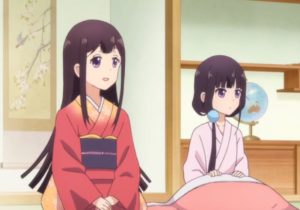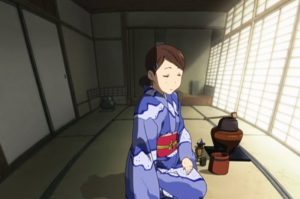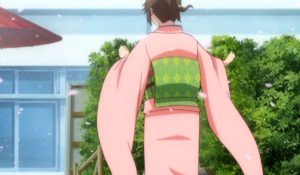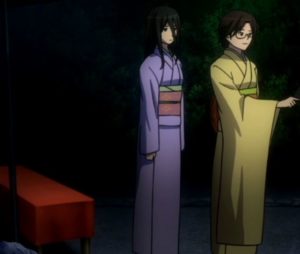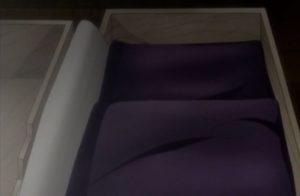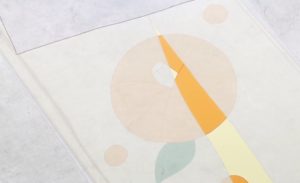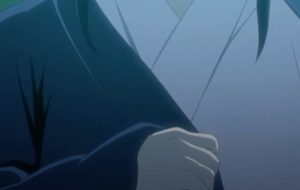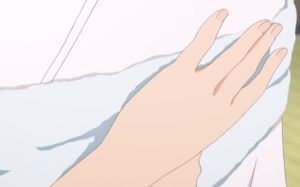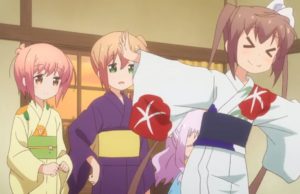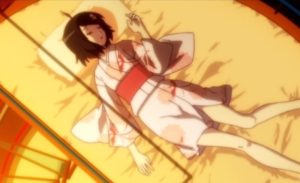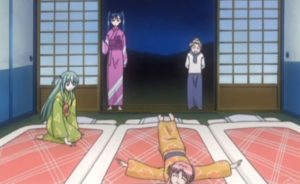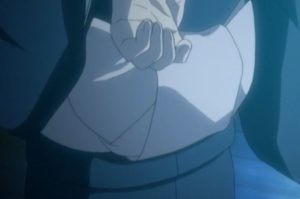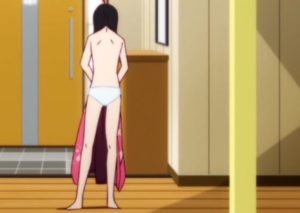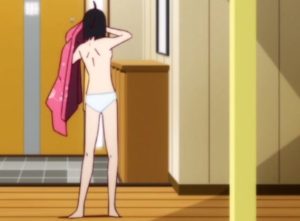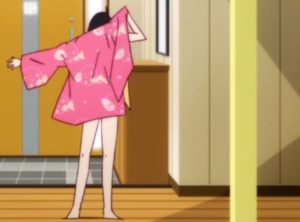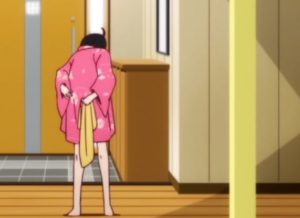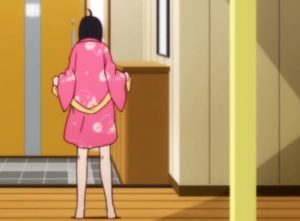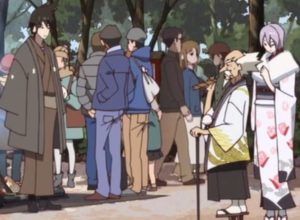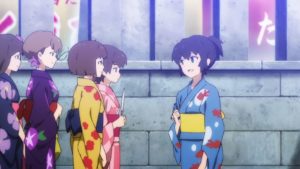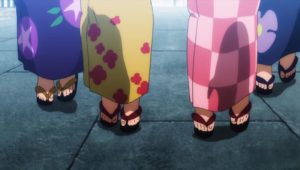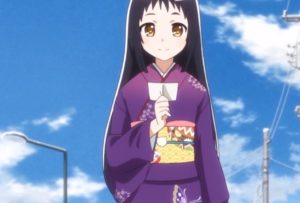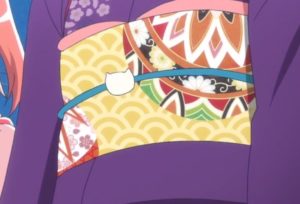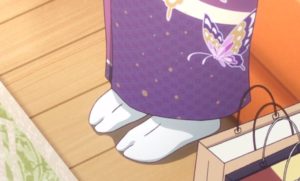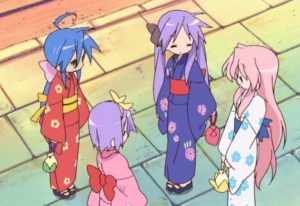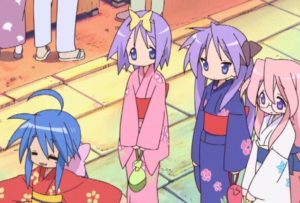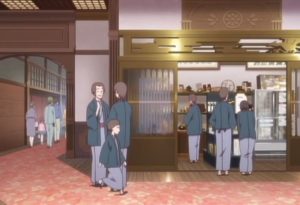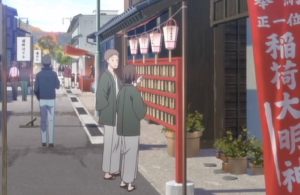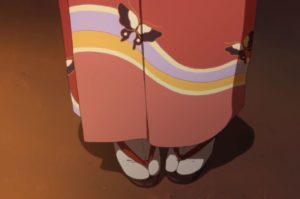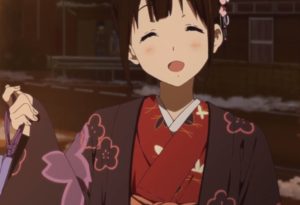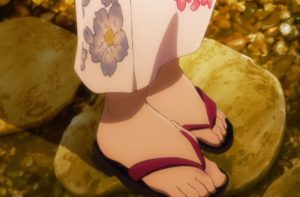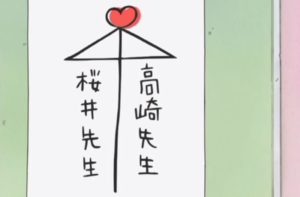Do you know the difference of Kimono and Yukata? When and How to Wear? How much?
Do you know the difference of Kimono and Yukata? When and How to Wear? How much?
Introduction
Japanese kimono is very unique and beautiful. Many of you might want to wear kimono. Do you know the difference between kimono and yukata? Yukata is an informal kind of kimono. Since the shape of kimono and yukata is almost same, many foreigners can’t tell the difference.
However, it’s important to know the difference. There’re some situations which you should wear yukata instead of kimono. Of course, there’s other way, too. If you wear yukata at the situation you should wear kimono, other people might think you disrespect them. In Japanese society, we tend to show respect to others by how we act but not by what we speak. Therefore, knowing of the difference between kimono and yukata will help you to have good communications with Japanese people.
© 中山幸・芳文社/ブレンド・S製作委員会
This image from “Blend S” is a scene where Aika (left) wears kimono and Maika (right) wears yukata. They are sisters of Sakuranomiya family which likes Japanese style such as Japanese clothes and Japanese cuisine.
In this article, I will explain the difference of yukata and kimono. When you wear them? How to wear them? How much?
1. Kimono and Two Kinds of Yukata
Yukata is a kind of kimono and the shape is the same. A big difference of yukata and kimono is the situation to wear. You can ware kimono anywhere and any situation. On the other hand, the situation that you can ware yukata is limited. It’s because yukata is casual clothes. We usually wear yukata at casual events like summer festivals. There’s another kind of yukata and we wear the yukata as loungewear.
Another difference of yukata and kimono is how to ware. Yukata can be worn directly. On the other hand, kimono needs Nagajyuban (長襦袢, ながじゅばん) which is full-length undergarment for kimono. Therefore, yukata is much easier to wear.
(C)2008瀬川ハジメ/[喰霊-零-]製作委員会
This image from “Ga-Rei: Zero” is a scene where Yomi Isayama is wearing Nagajyuban. “Naga” of Nagajyuban means long. You can see the jyuban is long, so that this is Nagajyuban.
As I mentioned, there’re two kinds of yukata. One is for when you go out. The other one is yukata as loungewear.
If you are foreign tourist, there are some typical situations you can ware yukata and kimono. When you experience Japanese tea ceremony (茶道, さどう, Sadou) or Japanese flower arrangement (華道, かどう, Kadou) you might wear rental kimono. Tourist spots like Kyoto and Tokyo, there are kimono and yukata rental and dressing shop. Tourists rent a kimono or a yukata to walk streets. You can also wear yukata at ryokan (Japanese inn, 旅館, りょかん). Most Japanese ryokan provide yukata for their guests as loungewear.
©かきふらい・芳文社/桜高軽音部
This image from “K-On!!” is a scene where K-On members experience Japanese tea ceremony in their high school.
2. The difference of Kimono and Yukata (Going Out and Indoor)
Now you know big difference of kimono and yukata. Now, I will explain details. Let’s look at small part of difference like shape and price.
| # | Item | Kimono | Yukata (Going Out) | Yukata (Indoor) |
| 2.1 | Type | Formal | Casual | Casual |
| 2.2 | Shape | Same | Same | Same |
| 2.3 | Material | Cotton, Wool, Silk, etc | Cotton, Hemp, Polyester Fabric | Cotton, Hemp, Polyester Fabric |
| 2.4 | How to Wear | Wear Over Jyuban | Without Jyuban | Without Jyuban |
| 2.5 | Kitsuke | Need | Need | Don’t Need |
| 2.6 | Seasons to Wear | Throughout the Year | Summer | Throughout the Year |
| 2.7 | Occasion to Wear | Wedding Ceremony, New Year’s Event | Casual Occasion (Summer Festivals) | Indoor |
| 2.8 | Foot Wear | Tabi and zouri or Geta | Geta on Bare feet | Nothing |
| 2.9 | Price Range | USD 100 ~ | USD 20 ~ 1,000 | USD 20 ~ 50 |
2.1. Type
2.1.1. Kimono
Kimono is formal dress. You can wear it anywhere. Some people wear kimono for daily use. Especially, people doing business in traditional Japanese culture like tea ceremony and flower arrangement wear kimono every day. However, most people wear it at formal occasion like a coming of age ceremony and a wedding ceremony.
2.1.2. Yukata (Going out)
Yukata is casual clothes. People wear yukata in casual events. Most people wear it at summer festivals. Since the cloth for yukata is thinner than Kimono, people wear yukata only in summer.
2.1.3. Yukata (Indoor)
This type of yukata is only wear inside of room. It used to be worn at home as casual clothes in old time. However, today most people don’t wear it at their home. Usually, people only wear at ryokan (Japanese inn, 旅館, りょかん) as loungewear.
2.2. Shape
Basically, shapes of kimono and yukata are the same. Since kimono has several types, there are some small differences. For example, furisode (振袖, ふりそで) is a formal kimono for unmarried women. The sleeves of some furisode are longer than 1 meter. On the other hand, tomesode (留袖, とめそで) is a formal kimono for married women. The sleeves of tomesode are shorter than furisode. It is almost as same as sleeves of yukata. About specific types of kimonos, like furisode and tomesode, I will explain at other article.
(C)KADOKAWA CORPORATION ENTERBRAIN/アマガミSS製作委員会
These image from “Amagami SS” are a scene where high school girls (of course, unmarried) wear furisode in the school event. You can confirm the long sleeves of furisode.
To wear kimono and yukata, you need an obi (帯, おび, Japanese traditional belt for Kimono). Width of obi for informal kimono and yukata is half size compare to formal kimono.
2.3. Material
2.3.1. Kimono
The materials of kimono are high grade, if you compare with youkata. For example, fabric of kimono is usually made of wool, silk and cotton. There’re also some hand-dyed and hand-woven kimonos. They tend to be expensive.
(C)2008瀬川ハジメ/[喰霊-零-]製作委員会
This image from “Ga-Rei: Zero” is a scene where Yomi Isayama gets his wife’s kimono from the head of the Isayama family. Probably, this materials of kimono are very high grade because this was his wife’s one.
2.3.2. Yukata (Going Out)
Since yukata is for daily use, materials tend to be low grade when you compare with kimono. Most yukata is made of cotton. Cotton is also used for kimono but the cotton for yukata is more daily use material. There’re also yukata made of hemp and polyester fabric.
©篤見唯子・芳文社/スロウスタート制作委員会
This image from “Slow Start” is a scene where Hana Ichinose checks her yukata before going to the summer festival. I do not know whether this material is cotton ,hemp or polyester fabric but the storage way tells me that it is somewhat high quality.
2.3.3. Yukata (Indoor)
Material of yukata (indoor) use is almost same as outdoor use. However, cloth of indoor yukata is usually thinner.
2.4. How to Wear
2.4.1. Kimono
When you wear kimono, you need to wear jyuban under kimono.
(C)2008瀬川ハジメ/[喰霊-零-]製作委員会
You can confirm jyuban (white) under kimono in first image from “Ga-Rei: Zero”. Kimono must have jyuban. There is no exception.
2.4.2. Yukata (Going Out)
Yukata can be worn without jyuban. People usually wear directly on their underwear. I know there’re some foreigners who think yukata is always worn without underwear. However, when people go out, they wear underwear.
Usually people wear yukata without jyuban. However, today, some people wear it with jyuban. Yukata is easier to wear and less expensive than kimono. Therefore, some people enjoy wearing yukata by wearing it like kimono.
©篤見唯子・芳文社/スロウスタート制作委員会
These images from “Slow Start” are a scene where high school girls are wearing yukata (going out) with jyuban. Although this is a rare case, this work of 2018 reflects recent trends well. Good job!
2.4.3. Yukata (Indoor)
This type of yukata is also worn without Jyuban. Sometimes people wear it as pajamas and do not wear underwear. However, this depends on people and situations.
©西尾維新/講談社・アニプレックス・シャフト
(c)2005天野こずえ/マッグガーデン・ARIAカンパニー
(c)なもり/一迅社・七森中ごらく部
First image is from “Fake Story”, second is “Aria the Animation” and third is “YuruYuri”. The common point between the three pictures is not only they wear yukata (inoor), but also they are very cute!
2.5. Kitsuke (Helping to Wear,着付け,きつけ)
2.5.1. Kimono
To wear Kimono, you need special skill called kitsuke (Helping to Wear, 着付け, きつけ). When you wear kimono, you need a skilled person to help you to wear. You might think that all Japanese people can wear kimono by themselves. However, according to some research, about 75 percent of people cannot.
(C)2008瀬川ハジメ/[喰霊-零-]製作委員会
These images from “Ga-Rei: Zero” are a scene where Yomi Isayama is wearing kimono by herself. This indicates that she has kitsuke skill and received good education.
2.5.2. Yukata (Going Out)
When you wear yukata (going out), you also need kitsuke. However, this kitsuke is easier than kimono. Therefore, there’re some people who can wear yukata by themselves but cannot wear kimono.
©武田綾乃・宝島社/『響け!』製作委員会
This image from “Sound! Euphonium 2” is a scene where her mother helps Kumiko Oumae to wear yukata (going out). In fact, this is not a rare scene in Japan (me too).
I know there are some men think yukata is easy to undress women. Be careful, this type of yukata is not easy to wear and undress. If you undress, the lady must have kitsuke skill to wear it again.
2.5.3. Yukata (Indoor)
You do not need kitsuke for this type of yukata. Especially yukata which you borrow at ryokan, it’s easy to wear. You just put on yukata and tie obi belt.
©西尾維新/講談社・アニプレックス・シャフト
These images from “Fake Story” are a scene where Tsukihi Araragi is wearing yukata (indoor). It is easy enough to wear this type herself. (Some people call this short type not yukata but “yukata-dress”.)
2.6. Seasons to Wear
2.6.1. Kimono
You can wear Kimono all year around. Cloth of kimono is thicker and you wear jyuban under kimono. There’s also a special kind of coat for kimono. It’s not too cold in winter. There is also summer type of thinner kimonos, too.
©森見登美彦・幻冬舎/「有頂天家族」製作委員会
This image from “The Eccentric Family” is a scene where the members wear kimono and coat for New year’s event.
2.6.2. Yukata (Going Out)
This type of yukata is only for summer. Cloth of yukata is thin. If you wear it in summer, it’s nice and cool. However, it’s too thin to wear in winter. It’s depends on area, but in area like Tokyo and Kyoto, you can wear it the season around May to October.
©BRS on TV
These images from “Black Rock Shooter” are the scene where shool girls go to the summer festival wearing yukata (going out). As you may know, Summer festivals are held from early July to late August.
2.6.3. Yukata (Indoor)
If you wear yukata indoor, you can wear it any seasons. Since its thinner than yukata (going out), in winter you might feel cold. However, some places like onsen (Hot spring, 温泉, おんせん) ryokan, many people wear yukata during winter, too.
(c)なもり/一迅社・七森中ごらく部
This image from “Yuru Yuri” is a scene where high school girls stay at the ryokan with yukata (indoor).
2.7. Occasion to Wear
2.7.1. Kimono
You can wear kimono anytime and anywhere. It doesn’t have to be a special occasion. Actually, there’re some people who wear casual kimono when they go out with friends.
(C)荒井チェリー/一迅社・未確認で進行形製作委員会
This image from “Engaged to the Unidentified” is a scene where Shirayuki Mitsumine; mother of Mitsumine family visits Yonomori family house. She always wears casual kimono (by the way she is not human).
Of course, you can wear kimono at very formal situation wedding ceremony and coming of age ceremony. You can also wear formal kimono at situation like New Year’s formal events and funerals.
©京都アニメーション/うさぎ山商店街
This image from “Tamako Market” is a scene where Midori Tokiwa (center) will visit a shrine for the new year. Whether you wear kimono for visiting a shrine for the new year depends on the person. One of the reason is that visiting there isn’t always a formal event. So the person like her who values the traditions or events wears kimono.
If you wear kimono at formal events like wedding ceremony, it means you respect the host. There’re some reasons. A reason is that kimono makes the place gorgeous. Also it takes much more time and cost to wear kimono, if you compare with western dress. By taking those time and cost, you show respect to the host.
You must be careful at formal occasion because there’re appropriate types kimonos for each situation. Also there are formality levels of kimono. High levels of kimono shows more respect. About the formality of kimono, I will explain on another article “Formality levels of Kimonos: Kimono with the Family Crest on the Five Places and Three Places.”
2.7.2. Yukata (Going Out)
Yukata is for informal situations like summer festivals. Many people also wear it at fireworks display, too.
(C)美水かがみ/らっきー☆ぱらだいす
This image from “Lucky Star” is a scene where high school girls enjoy summer festival.
In old time, yukata was just a nightwear. People wore it after bath. It was considered as rude to wear yukata when people go out. In the Edo (江戸, えど) period, some people started to wear yukata at outdoor as casual wear. However, it was allowed only night time and casual events like summer festivals and firework displays. Then situations to wear yukata have gradually changed with the times. Although today, yukata is still very casual wear, you can wear it at day time, too.
On the other hand, you can’t wear yukata at formal events like wedding ceremony. If you wear yukata at formal situation, that shows you do not respect others.
2.7.3. Yukata (Indoor)
This type of yukata is just for indoor use. You wear it at your home or inside of ryokan. Basically, you cannot go out with yukata. There are some onsen streets where allow people to go out with yukata. However, those cases are rare. If you want to go out, you should ask a staff of ryokan.
(C)花いろ旅館組合
This image from “Hanasaku Iroha” is a scene where the guests in the onsen ryokan go out wearing yukata (indoor). This is the case that onsen street allows it. For your information, the cloth which they put on over thier yukata is “茶羽織” (ちゃばおり, Chabaori).
You must be careful at hotels. There’re some hotels which provide yukata as loungewear. However, if the hotel doesn’t have onsen facility, those yukata is for pajamas. They usually do not allow guest to go outside of their room wearing yukata. Of course, it’s rude to go events like tea ceremony wearing this type of kimono.
2.8. Foot Wear
2.8.1. Kimono
When you wear kimono, you wear tabi (Japanese Socks, 足袋, たび) for your feet. For shoes of kimono, people wear geta or zouri. Geta (下駄, げた) is Japanese traditional shoes made of wood. zouri (草履, ぞうり) is Japanese traditional sandals. Zouri used to be made of straw. Today we still have straw zouri but most zouri are made of materials like leather, vinyl, and cloth.
©米澤穂信・角川書店/神山高校古典部OB会
This image from “Hyouka” is a scene where Eru Chitanda visits a shrine for the new year. She wears tabi and geta. She is so beautiful and sexy in kimono (Precisely, this type of kimono is “小紋” (こもん, Komon)).
When you go to a formal event, you should wear zouri because it’s more formal. There are some different kinds of zouri. For example, thick zouri is a formal zouri for women.
2.8.2. Yukata (Going Out)
Since yukata is casual, you don’t wear tabi. You just wear geta on bare feet.
©2017「月がきれい」製作委員会
This image from “Tsuki ga Kirei” is a scene where Akane Mizuno goes to the festival wearing geta without tabi. Look at the base of her right fingers. Generally, Japanese usually do not wear geta. So we may get a blister with strap of geta when we wear it . Therefore, when you wear geta, prepare a band plaster etc in advance.
2.8.3. Yukata (Indoor)
This type of yukata is just for indoor use and you do not go out. When you walk inside of ryokan, you usually use slippers.
As I explained, at hotel without onsen facilities, you aren’t allowed to go outside of your room with yukata. Be careful that you also cannot use slippers outside of your room at this type of hotels.
2.9. Price Range
2.9.1. Kimono
It’s hard to define the price range of kimono because there’re many different kinds. If you want to get kimono at the cheapest, it might be around USD 100. There’re also second-hand kimonos which you can get much cheaper.
The formal kimono like furisode costs at least USD 500. Usually it cost around USD 2,000. Those prices are only cost of kimono. In addition, you need to get other goods like obi, tabi, zouri, jyuban, and so on. There’re some kimonos which cost more than USD 100,000. The price of kimono depends on which kinds of kimono you.
2.9.2. Yukata (Going Out)
Yukata is much cheaper than kimono. If you get inexpensive yukata, you can get one from USD 20. This price is only for yukata and you need to get obi and geta. You can buy yukata, obi, and geta in a set. The lowest price of those sets is about USD 40.
Those low price yukatas are usually made in China. If you want to get yukata made in Japan, the price is from USD 100. Even though, yukata is informal wear, there are high grade yukata. Those yukata cost more than USD 1,000.
2.9.3. Yukata (Indoor)
This type of yukata is most inexpensive. You can get one around USD 20 to 50. Usually obi for this type of yukata is included at this price and you don’t need to buy other goods.
Summary
As I have explained, there’re many differences between kimono and yukata. The most important point is that yukata is informal. Therefore, there’re many situations which you should wear kimono but not yukata.
However, if you are interested in wafuku (Japanese traditional clothes, 和服, わふく) and want to get one, I recommend yukata to get started. It’s inexpensive and easier to wear. Especially, I recommend “yukata for Indoor”. There’re some yukatas which you can wear like the way you wear kimono. If you want to take it to your country and wear, you don’t have to worry too much about the difference. Even many Japanese students who study abroad overseas take yukata instead of kimono. That way they can wear by themselves and easy to handle.
